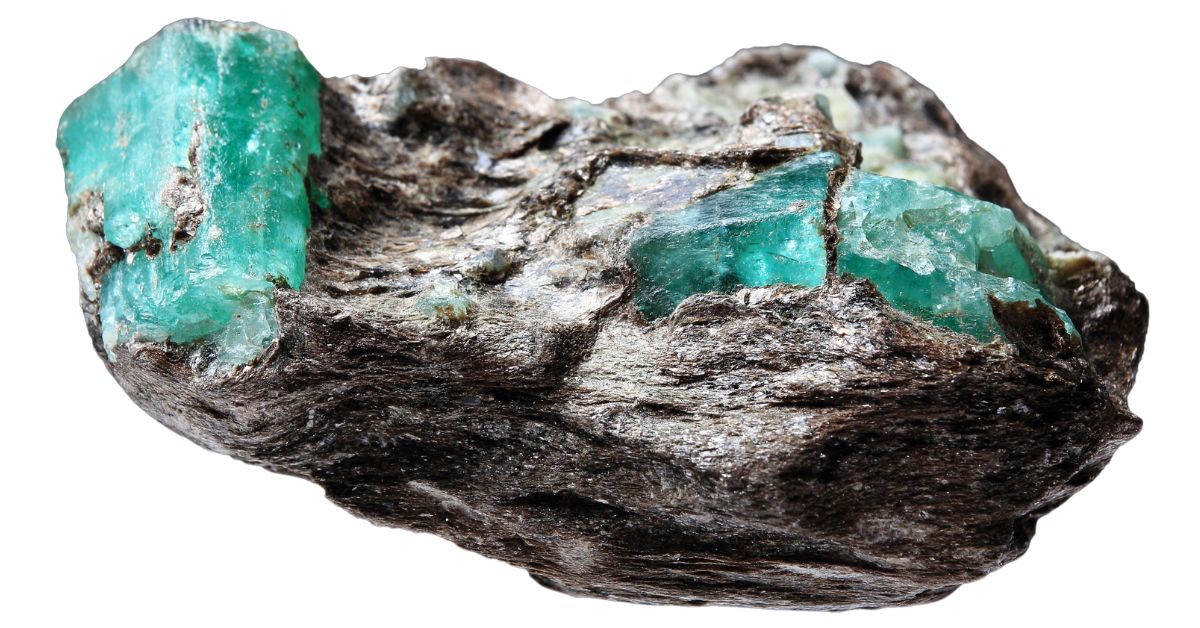Searching for emeralds in California feels like hunting for hidden treasures close to home. Finding these rare green gems can turn a regular day outside into an exciting adventure you’ll always remember. With a little knowledge, you might uncover amazing surprises in some of the state’s most beautiful areas.
Hunting for emeralds can be tricky, but that’s what makes it so fun. If you don’t know where to start, you might overlook some of the best spots. Thankfully, California offers great chances to discover something special if you know where to dig.
Whether you’ve been rockhounding for years or are just trying it out, there’s nothing like the thrill of spotting an emerald in California’s rugged terrain. It’s a rewarding experience that makes every trip worth it.
We’ll walk you through exactly what you need to search confidently, and the only other thing that truly helps is Rock Chasing’s California Rocks & Minerals Identification Field Guide. It keeps you from missing something valuable or walking right past a find you would have loved if only you knew what it was.
How Emeralds Form Here
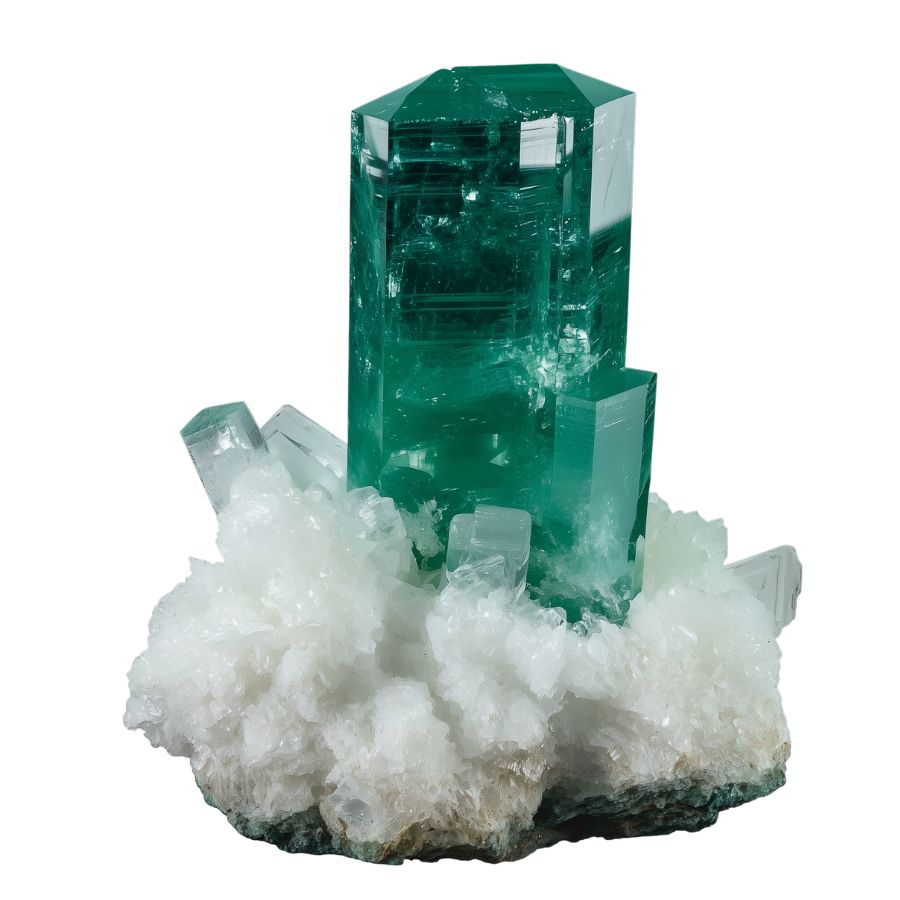
Emeralds form deep underground when hot fluids containing beryllium and chromium squeeze through cracks in rocks. Think of it like making rock candy, but way more intense!
These fluids, heated up to about 752°F, mix with aluminum and silicon in the rocks. When conditions are just right, these elements combine to form hexagonal crystals.
The chromium is what gives emeralds their famous green color. The whole process takes millions of years, and the crystals grow super slowly in these tight spaces.
Usually, they form in areas where different types of rocks meet, especially in places where ancient volcanic activity occurred.
Types of Emeralds
Emeralds are fascinating gemstones that come in a variety of types, mostly categorized by the place they were mined. This classification helps identify the characteristics and quality of each emerald.
Colombian Emeralds
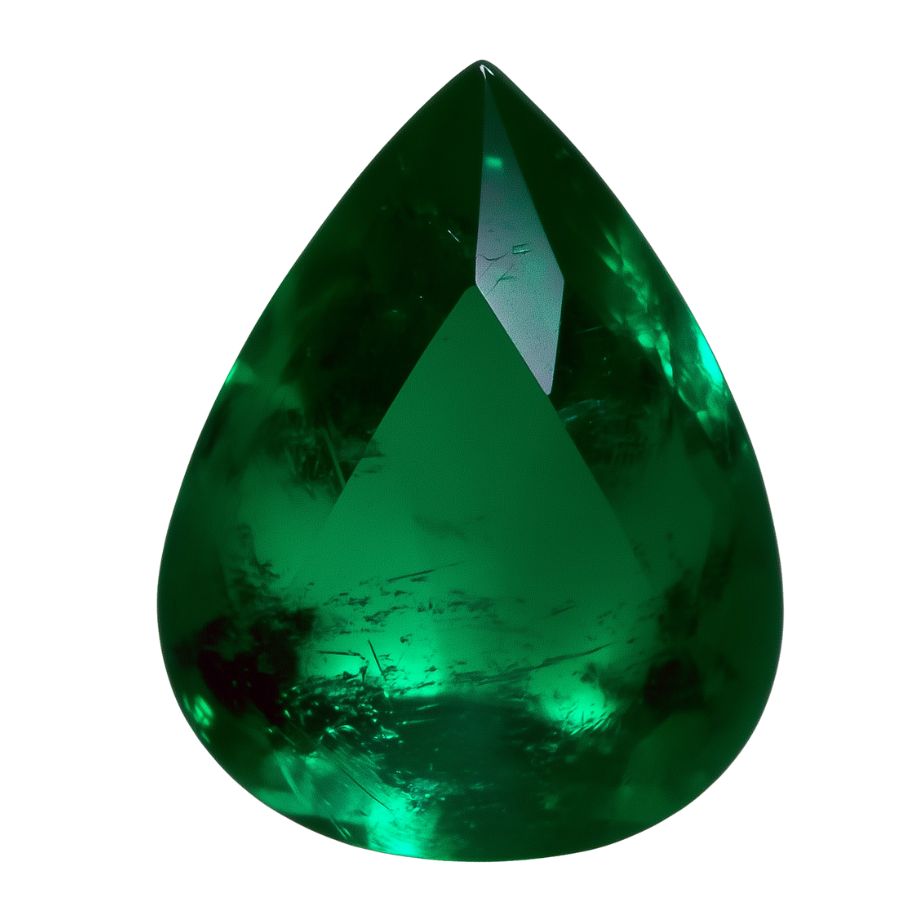
Colombian emeralds display a pure, intense green color that many consider the standard for emerald beauty. Their color comes from chromium and vanadium, creating a vivid forest green that catches the eye immediately.
The green is so pure that it lacks the blue or yellow tints found in emeralds from other regions.
These stones often show unique growth patterns on their surface, including natural etch marks and distinctive crystal faces. The internal features, called gardens, are actually tiny crystals and liquid droplets trapped inside the stone during formation.
Colombian emeralds typically have high transparency despite their inclusions. When you look through them, you can often see deeper into the stone compared to other emeralds. This clarity, combined with their color, makes them particularly striking.
Most people don’t realize how many incredible rocks California hides in its mountains, deserts, and beaches. This guide shows exactly what you’ve been walking past.
🌈 300+ color photos of real California specimens
🪨 Raw + polished examples make identification simple
🏜️ Covers coastlines, gold country, Sierras & more
💦 Waterproof pages built for real outdoor use
Brazilian Emeralds
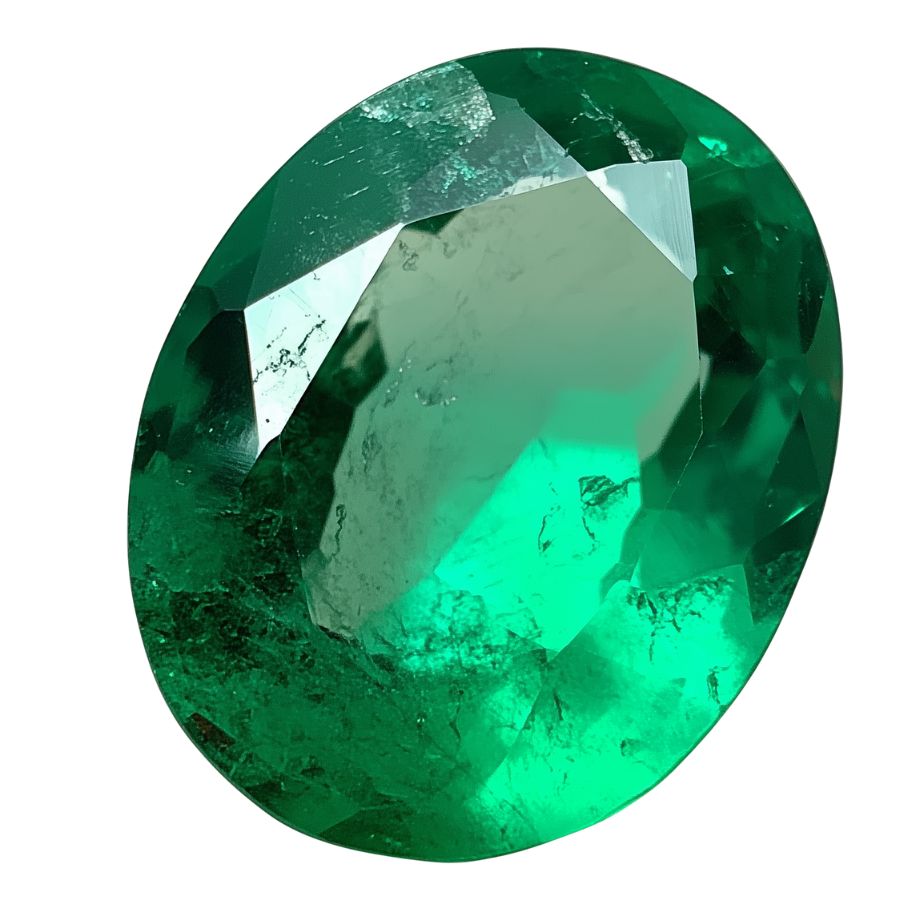
Brazilian emeralds show a bright, lively green color that often includes subtle yellow undertones. Their color range is quite diverse, from light mint green to deeper forest shades. Iron content in these stones creates this unique color variation.
These emeralds often contain interesting internal patterns called growth zones. These zones show how the crystal formed layer by layer, creating fascinating internal landscapes.
Some rare specimens even display cat’s eye effects or six-pointed stars when cut properly.
A unique aspect of Brazilian emeralds is their tendency to form larger crystals. This characteristic means they can be cut into bigger gems while maintaining their color and clarity. Their crystal structure often shows perfect hexagonal shapes, even in rough specimens.
Zambian Emeralds
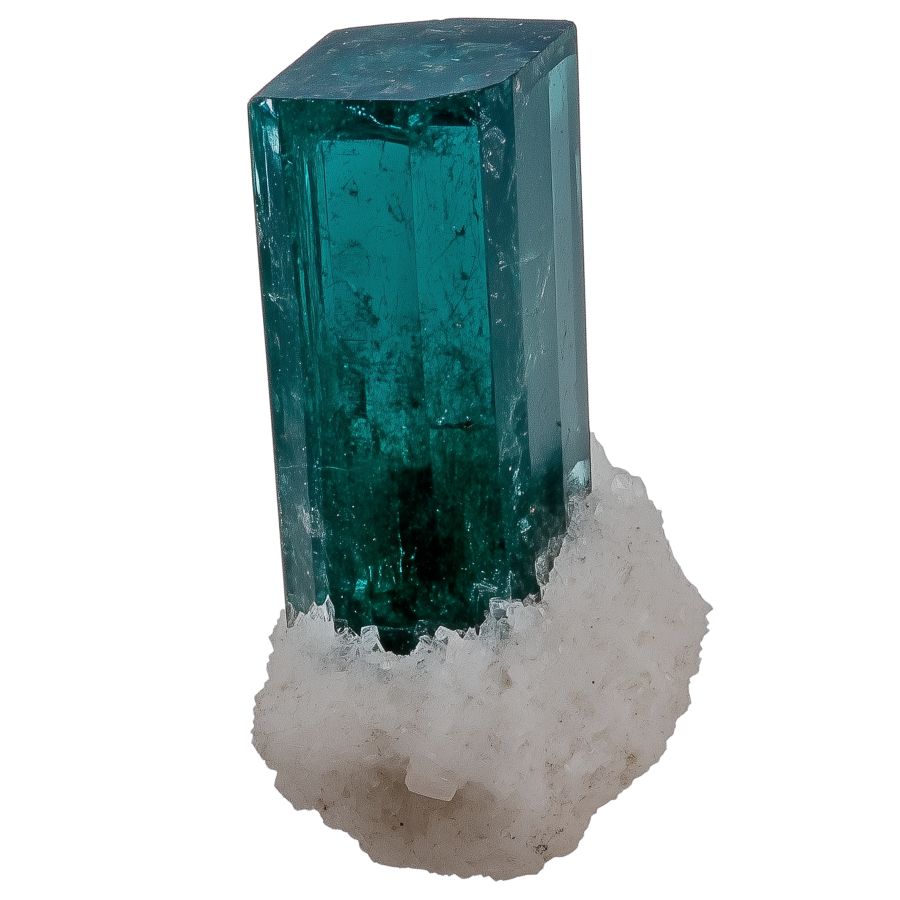
Zambian emeralds showcase a deep bluish-green color that sets them apart. Their color is highly saturated and remains consistent throughout the stone. This rich hue comes from their unique combination of chromium, vanadium, and iron content.
These emeralds typically have exceptional clarity. Their internal structure shows fewer fractures and inclusions compared to most emeralds.
The chemical makeup of Zambian emeralds includes higher iron content, which gives them better structural integrity. This composition means they’re less likely to show internal stress cracks and can withstand cutting and polishing better than many other emeralds.
These stones often form with larger, cleaner crystal faces. This characteristic allows them to be cut into impressive sizes while maintaining their color depth and clarity.
Their internal structure is typically more stable, requiring fewer treatments to enhance their appearance.
Russian Emeralds
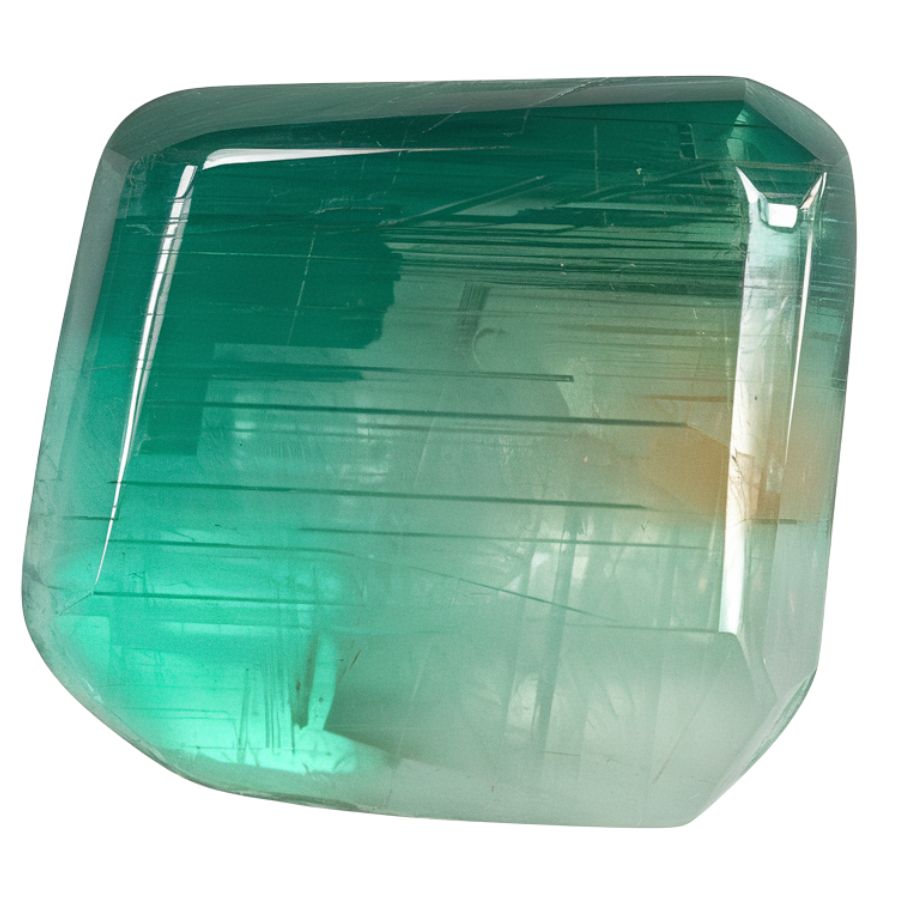
Russian emeralds feature a distinct light green color with a noticeable blue undertone. Their color is less subdued than other emeralds, giving them an elegant and transparent appearance.
These stones have minimal inclusions and when present, their inclusions tend to be small and well-distributed, creating a clean appearance. The internal structure of Russian emeralds is typically more uniform than other varieties.
The crystal formation of Russian emeralds occurred in unique geological conditions, creating stones with remarkable structural integrity. This formation process resulted in emeralds with fewer internal stresses and natural fissures.
These emeralds often show distinctive growth patterns and zoning that create subtle color variations within each stone. This characteristic gives them a depth and complexity that becomes more apparent when viewed under different lighting conditions.
Ethiopian Emeralds
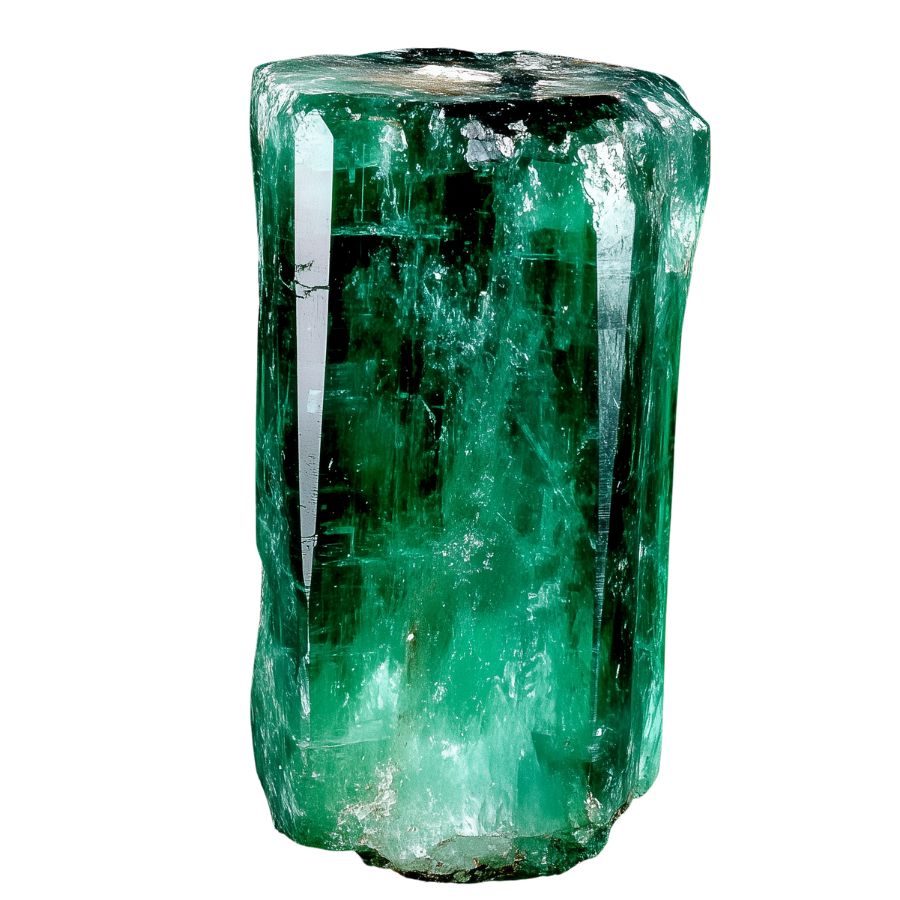
Ethiopian emeralds showcase a stunning range of green colors, from deep forest green to bright bluish-green tones. Their transparency is remarkable, often surpassing other emeralds in clarity.
These stones contain interesting internal features called two-phase and three-phase inclusions. These inclusions look like tiny bubbles of water and gas trapped inside the stone.
Dark flakes of biotite mineral also appear inside, creating unique patterns that make each stone special.
The crystals often form in larger sizes than typical emeralds. Some rough pieces have been found weighing over 600 grams, which is quite impressive. Their size allows cutters to create larger gems while maintaining excellent color and clarity.
Cat’s Eye Emeralds
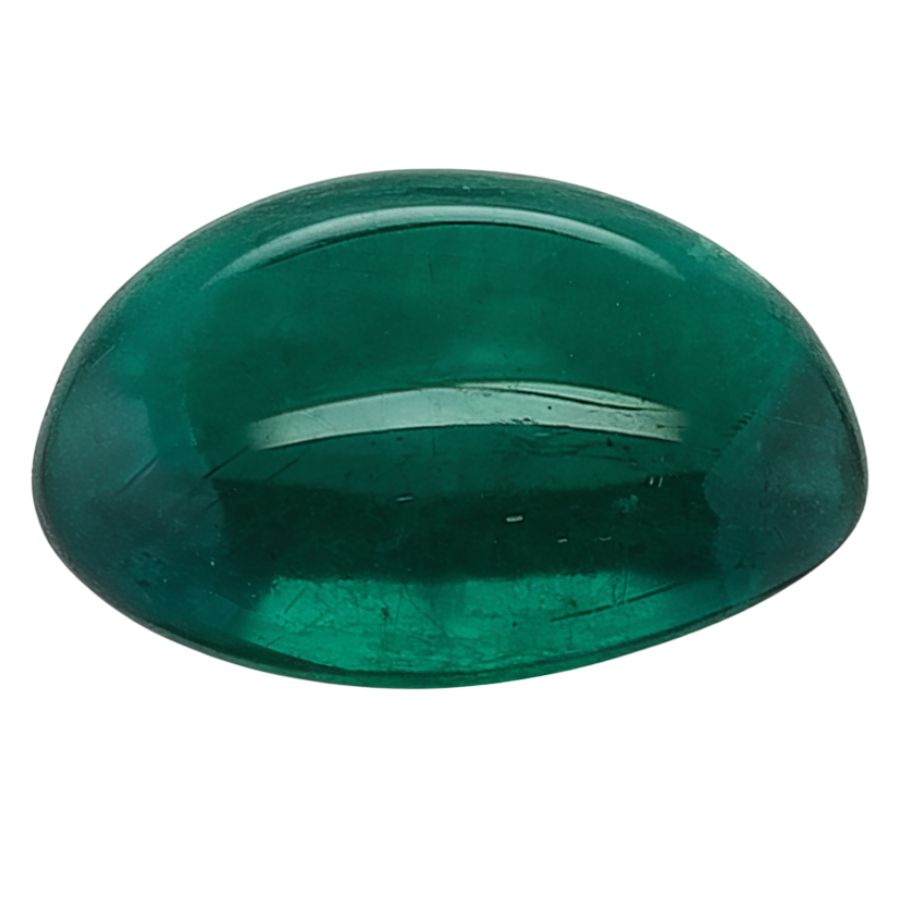
Cat’s Eye emeralds display a remarkable light band that moves across the surface like a cat’s eye catching light in the dark. This effect, called chatoyancy, happens because of tiny parallel tubes inside the stone.
The internal structure of these stones has tiny hollow tubes lined up perfectly to create the cat’s eye effect. These tubes formed naturally during the crystal’s growth. The way these tubes arrange themselves affects how sharp and clear the cat’s eye effect appears.
The green color in these stones varies from light to deep green, and the cat’s eye effect can appear in different strengths.
Some stones show a sharp, well-defined line, while others display a softer, more subtle band. The best specimens show both rich color and a strong eye effect.
Trapiche Emeralds
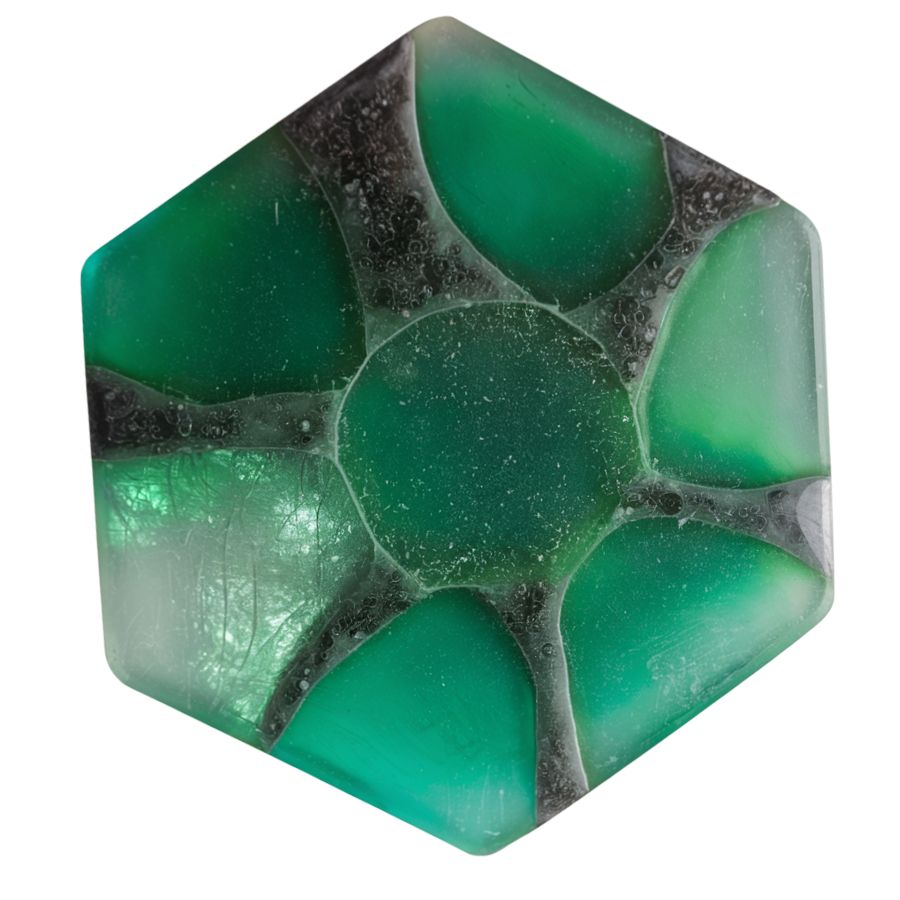
Trapiche emeralds showcase a striking six-pointed star pattern that looks like a wheel’s spokes. Black carbon materials create dark lines that divide the green emerald into six sections. This pattern forms naturally during the crystal’s growth.
The green sections between the dark spokes can range from light to deep green. The contrast between these areas creates an eye-catching pattern. Sometimes the spokes appear thick and bold, while in other stones they might be thin and delicate.
During formation, these stones developed their pattern because of changing growth conditions. The black material got trapped as the crystal grew, creating the spoke pattern. This happens only under specific conditions, which is why these stones are so rare.
The pattern can vary greatly between stones. Some show perfect, symmetrical stars while others have more irregular patterns.
Panjshir Emeralds
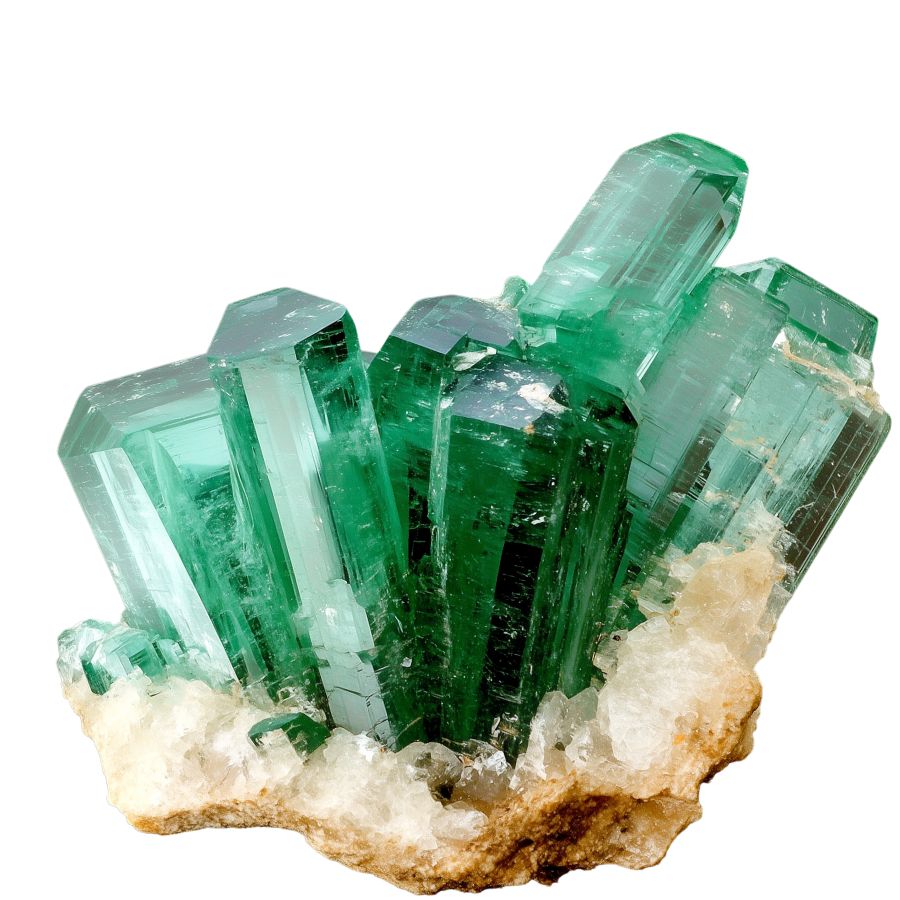
Panjshir emeralds show off a vibrant, saturated green color that many call “Panjshir Green.” Their color is usually deeper and more intense than other emeralds. When you look at these stones, you might notice interesting patterns that look like cobwebs inside them.
The internal features of Panjshir emeralds make them special. Some contain tiny crystals and patterns that formed millions of years ago. These features don’t take away from the stone’s beauty but add character to each piece.
These emeralds often form in pristine crystal shapes. Their natural form is so perfect that it sometimes influences how gem cutters shape the final stone.
The combination of color, clarity, and crystal quality makes them stand out in any collection.
Sandawana Emeralds

Sandawana emeralds shine with an intense green color that catches everyone’s eye. Most of these stones are quite small, usually under half a carat, but their color makes up for their size.
Inside these emeralds, you might find tiny needle-like crystals called tremolite. These needles can create interesting effects, sometimes giving the stone a slight blue tint.
The internal features are usually visible only under magnification, leaving the stone looking clean to the naked eye.
These emeralds formed through a special process involving hot magma meeting existing rock. This creation story gave them their unique internal structure and brilliant color.
Despite their small size, these emeralds pack a lot of beauty into each crystal. Their rich color and excellent clarity make them stand out. Large specimens are extremely rare, making them especially valuable to collectors.
Swat Emeralds
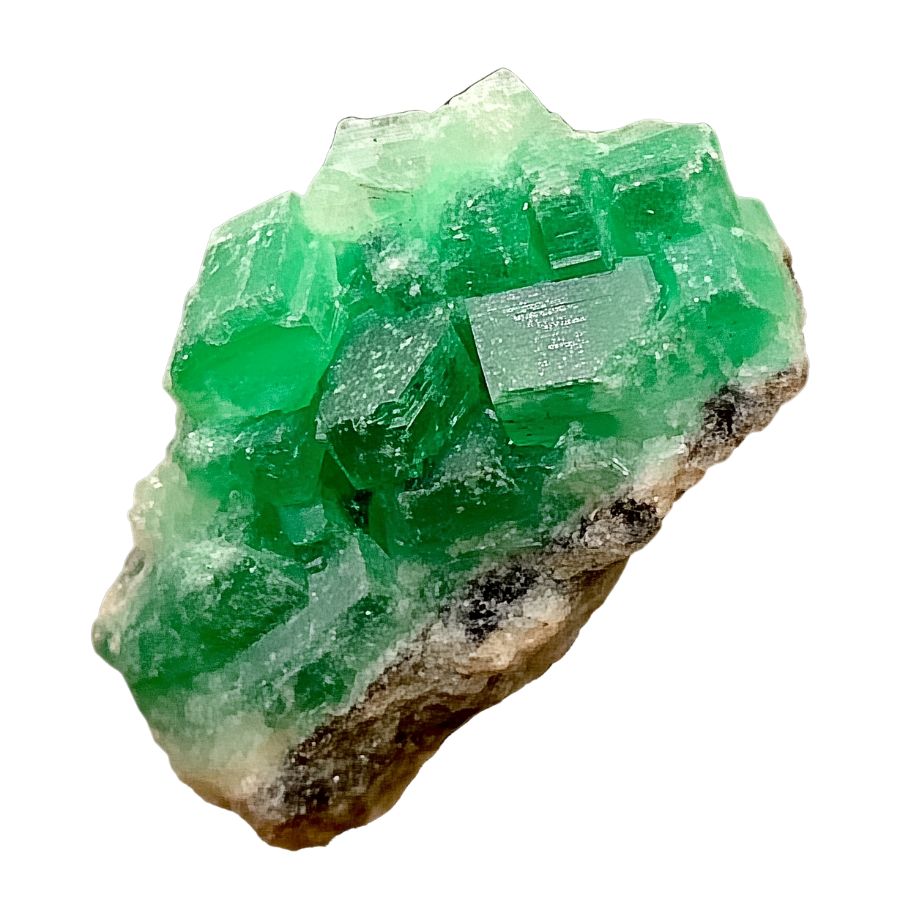
Swat emeralds show off a rich green color with hints of blue. Their color can range from medium to dark green, and many stones are remarkably clear.
The crystals often form in perfect hexagonal shapes, making them naturally beautiful even before cutting.
Inside these stones, you’ll find interesting features like tiny bubbles and other minerals. Some rare pieces even show a special pattern called trapiche, with a clear center surrounded by green zones and black lines.
These emeralds contain high amounts of chromium and iron, which give them their special color. The mix of these elements makes their green color different from other emeralds. Some stones even show color zoning, where different areas have slightly different shades of green.
Some special specimens have a colorless core with green zones around it. Black lines made of hematite and graphite can form a star pattern in these stones. This rare formation makes these particular pieces highly sought after by collectors.
What Rough Emeralds Look Like?
Emeralds have several distinctive characteristics that can help you identify them in their natural form. Here are the key features to look for:
Look for the Distinctive Green Color
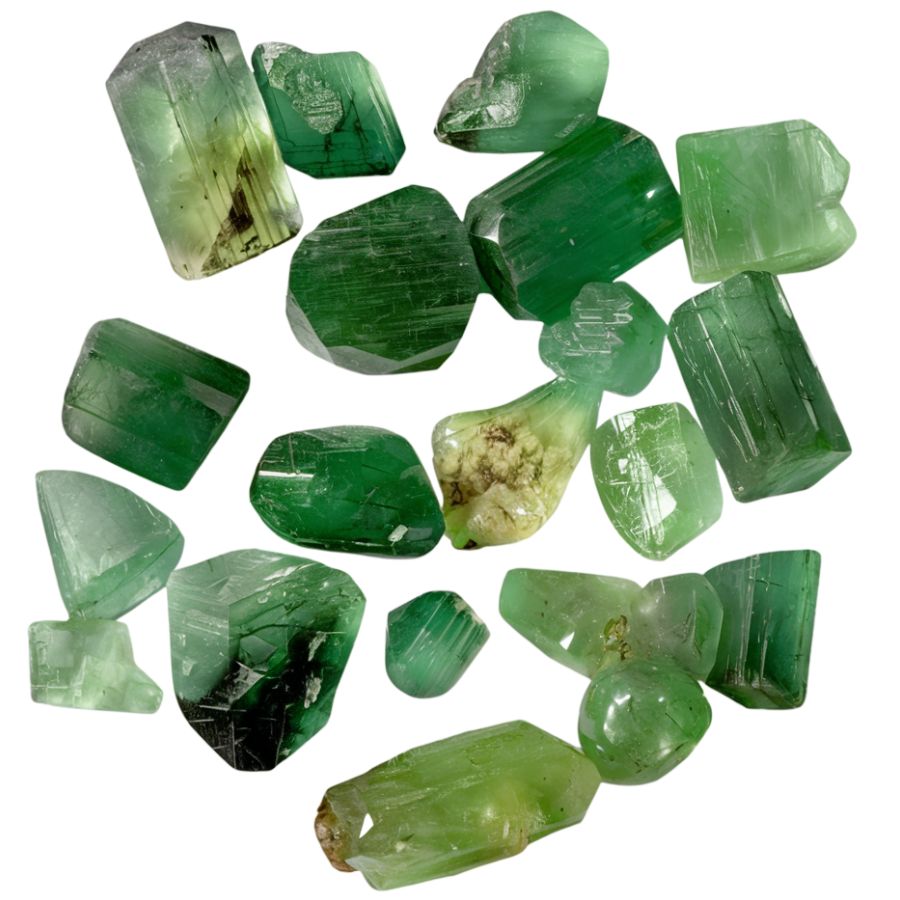
Raw emeralds typically show a deep, rich green color, but don’t expect the perfect clarity you see in jewelry. Natural specimens often appear slightly bluish-green or yellowish-green.
Even in rough form, you’ll notice the color is more intense than most green stones like peridot or jade. The green might look a bit muddy or cloudy, but it should still be noticeable even through the crystal’s natural texture.
Check for Hexagonal Crystal Structure
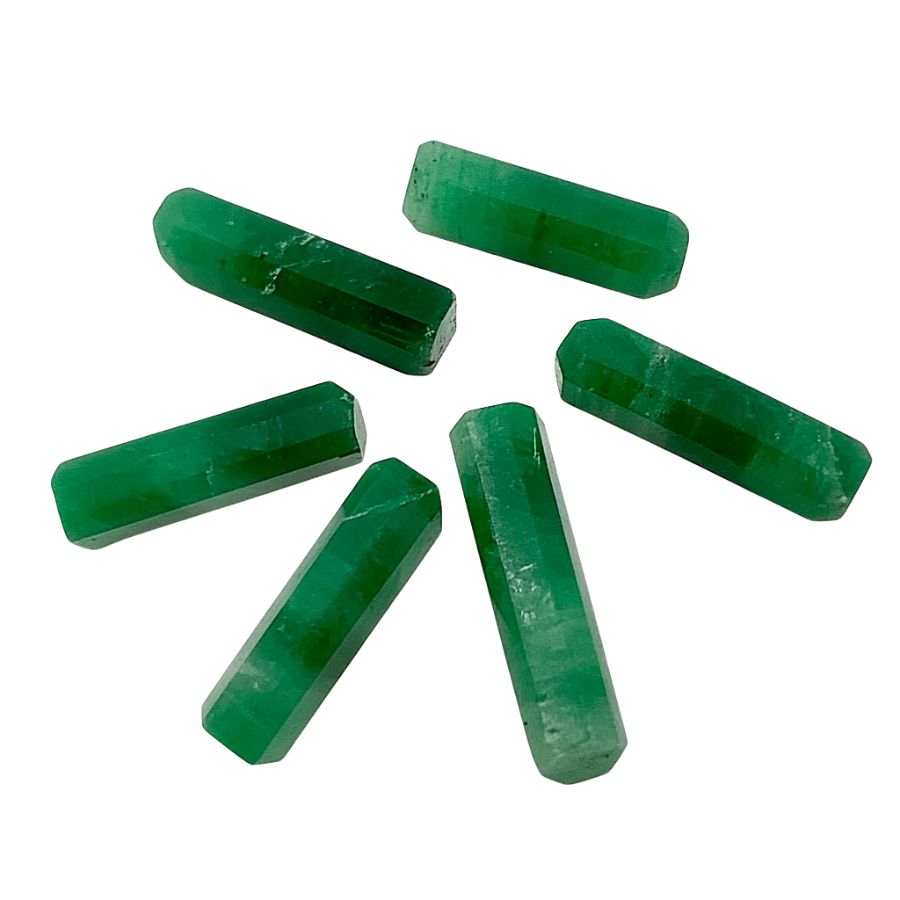
Here’s a dead giveaway – rough emeralds form in six-sided (hexagonal) columns. Look at the cross-section; it should be roughly six-sided, though it might not be perfect.
The crystals are usually longer than they are wide, like little green pencils. Sometimes they’re stuck together in clusters, making the hexagonal shape harder to spot.
Examine Surface Texture and Transparency
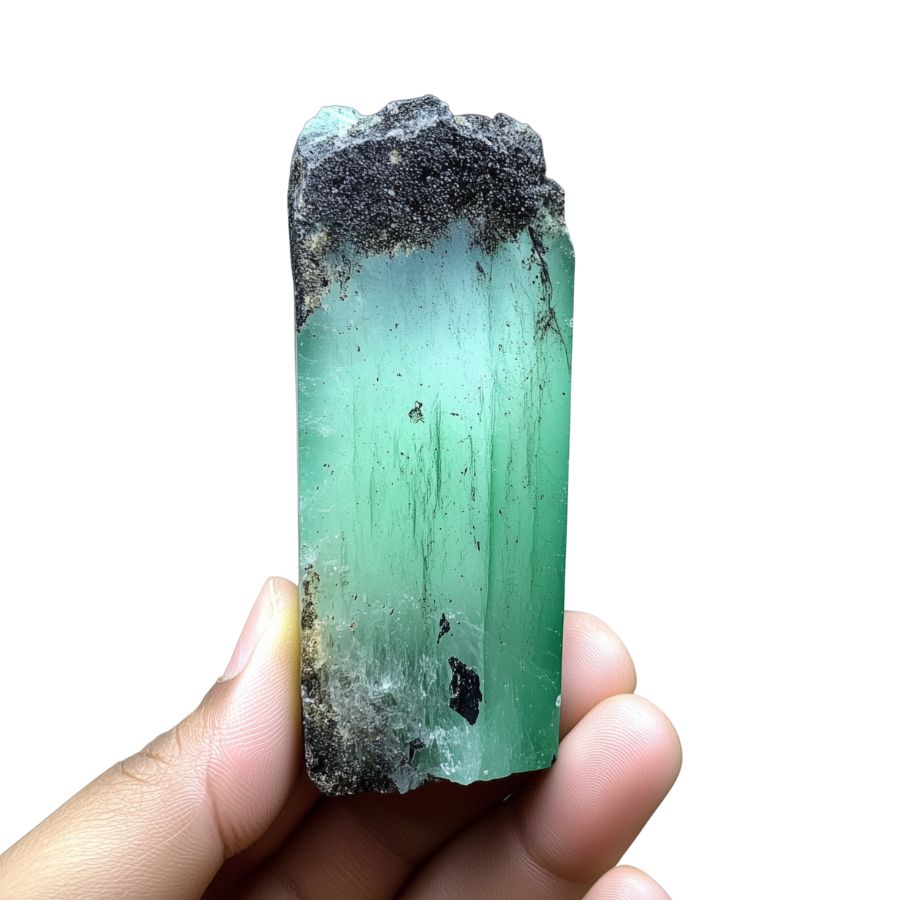
Raw emeralds have a glassy luster, but they’re often cloudy or translucent rather than transparent. Run your finger over the surface – it should feel smooth, not gritty like granite.
You might notice parallel lines or striations running lengthwise along the crystal. These natural grooves are typical of beryl family minerals.
Test for Hardness and Durability
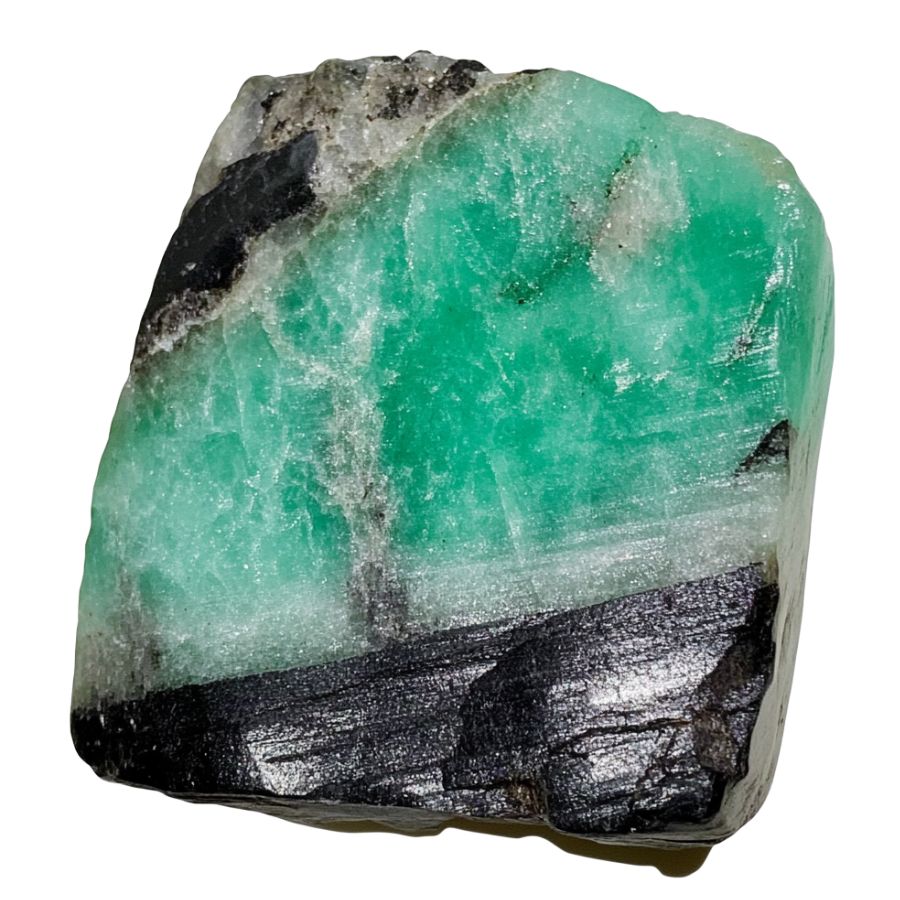
Emeralds rank 7.5-8 on the Mohs scale. Try scratching the specimen with a steel nail (hardness 5.5) – it shouldn’t leave a mark. But be gentle! A quartz crystal (hardness 7) won’t scratch it either.
The crystals can be brittle though, so they often have natural cracks or inclusions that look like tiny gardens inside.
Tips on Where to Look
Emeralds typically form in rocky areas and can be found in several accessible locations. Here’s where you should start looking:
Search Around Abandoned Mines
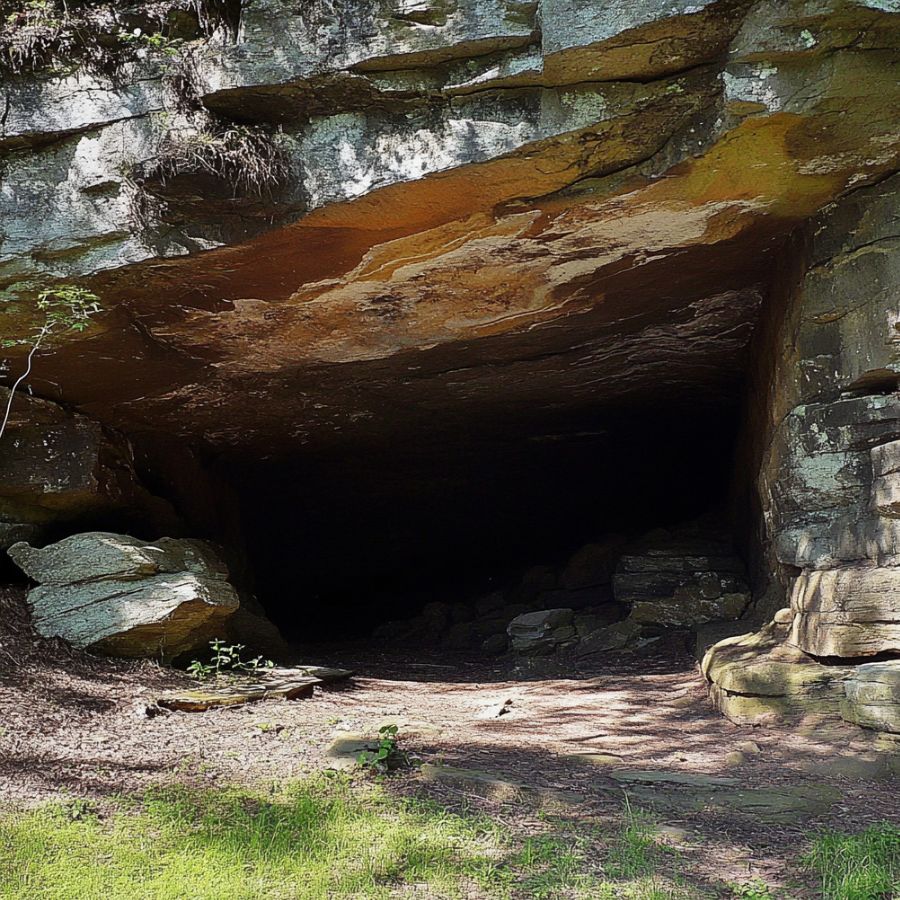
Look for abandoned mines near granite or metamorphic rock zones. These spots often have leftover emerald deposits.
Check mine dumps and spoil piles – that’s where miners tossed “waste” rock. Sometimes they missed good stuff!
Metamorphic Rock Zones
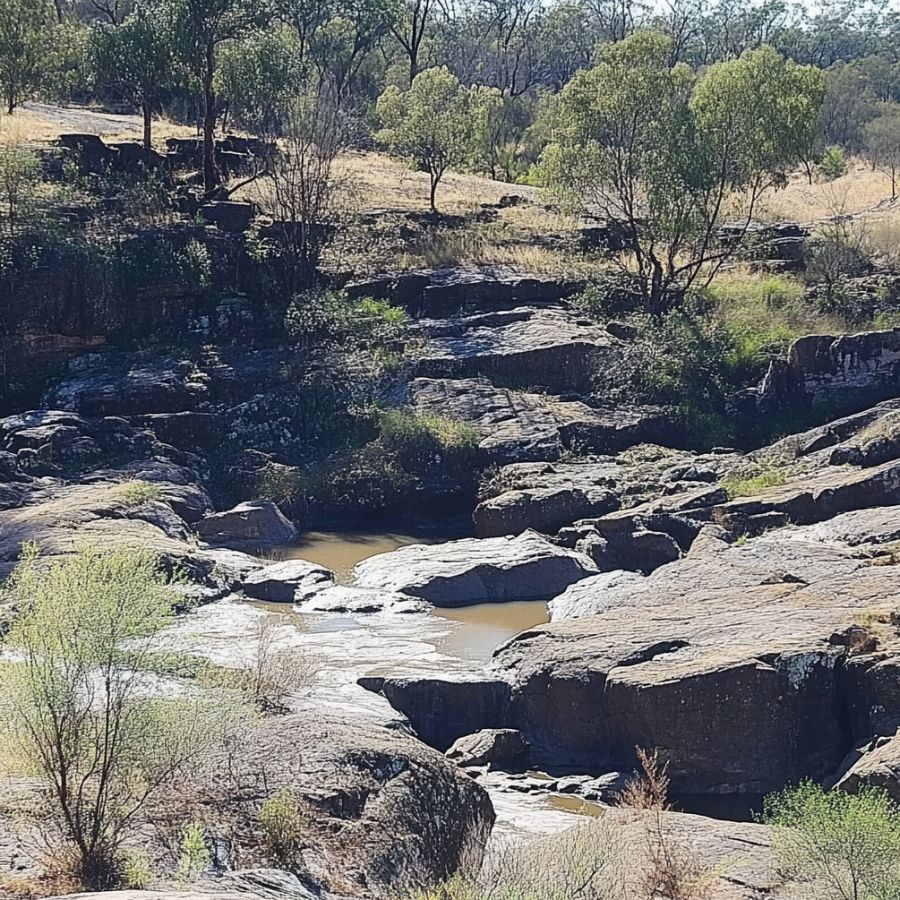
Search areas with schist and gneiss rocks. When you spot black biotite mica or white pegmatite veins running through these rocks, you’re in the right spot.
Emeralds typically form where beryllium-rich fluids interact with chromium-rich rocks, creating perfect conditions for crystal growth that results in these stunning green gemstones.
Check Streams and Riverbeds
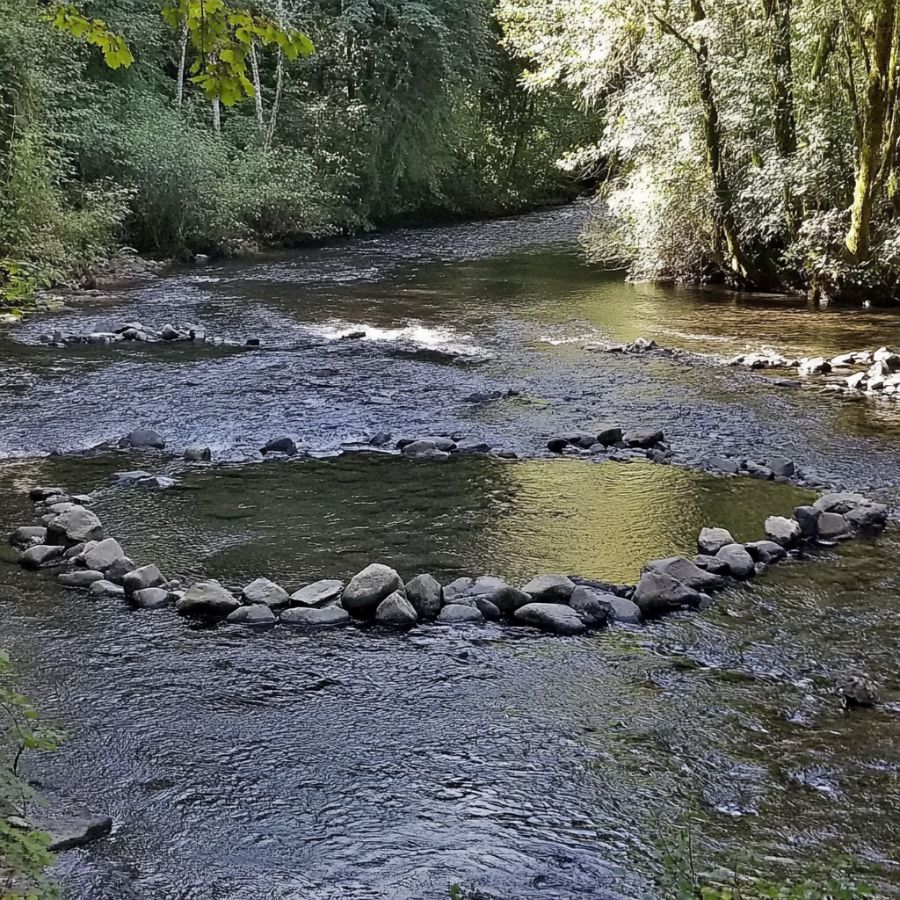
Emeralds can wash out of rocks and end up in streams. Walk along shallow rivers or creeks with gravel beds. Look for green stones mixed in with the rocks.
Water naturally separates heavier stones, so emeralds might settle in bends or slow-moving areas.
Pegmatite Areas
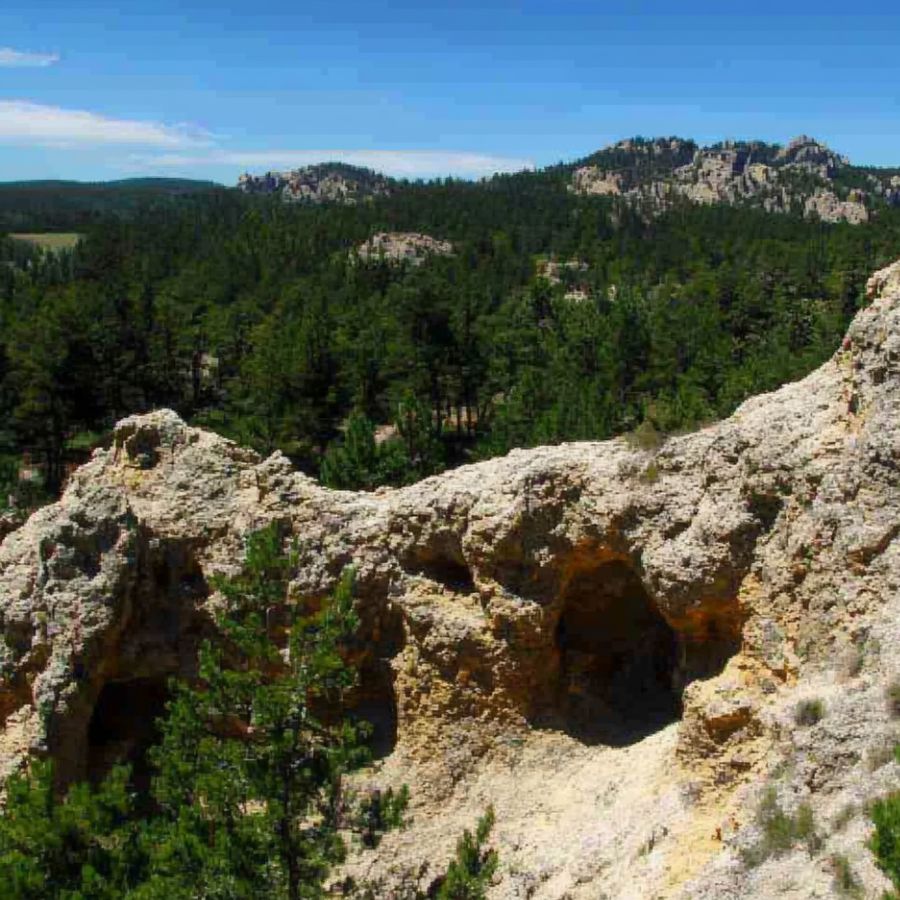
Check white, coarse-grained pegmatite outcrops. They’re like giant stripes in rock faces. Emeralds love hanging out in these mineral-rich zones. Look for black tourmaline – they’re often neighbors!
Tools You Will Need
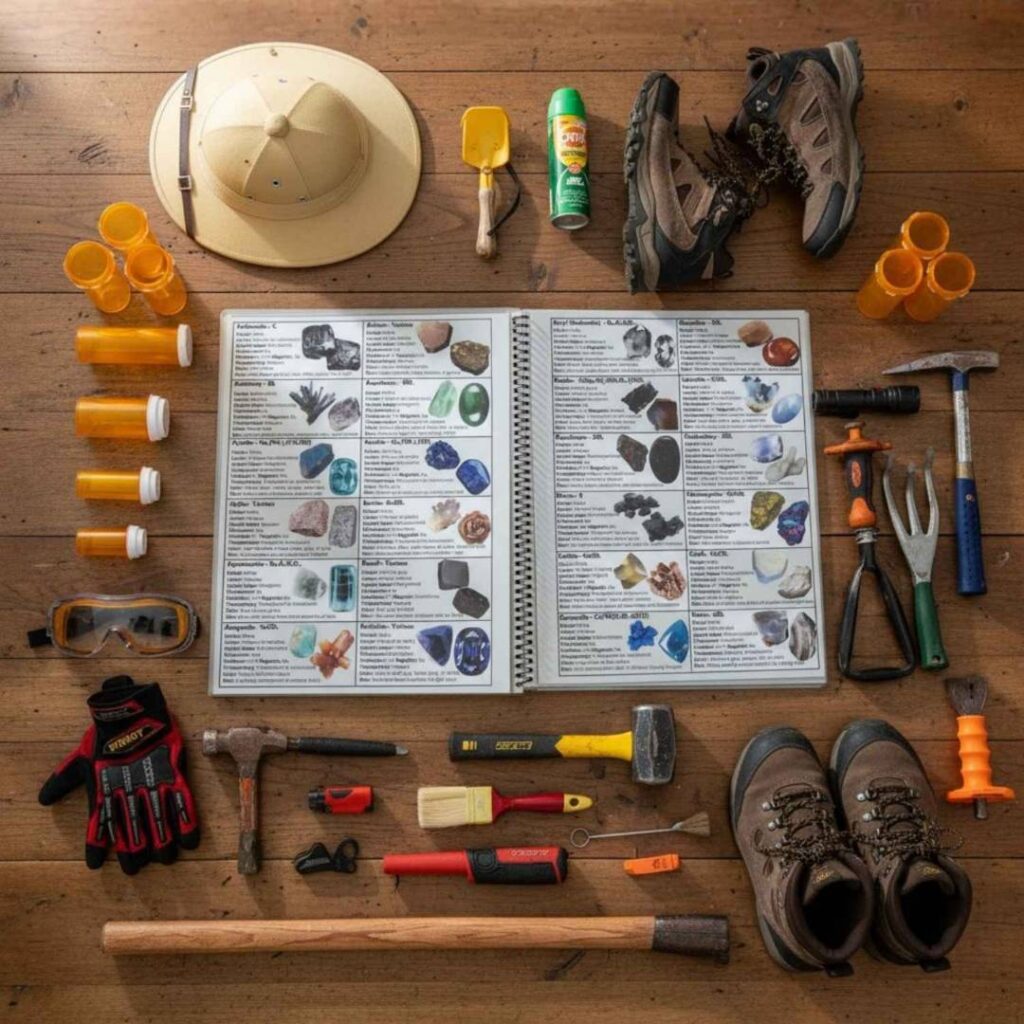
Emeralds hide well in rocky cracks and loose soil, so having a few simple tools makes a big difference. You don’t need much to get started, and most beginners can explore confidently with just a couple of basics. These tools help you spot emeralds faster and keep your finds safe.
A Trustworthy Field Guide – Essential
Every rockhound knows how much smoother a trip goes when identification is fast and clear. This guide makes that happen. Rock Chasing’s California Rocks & Minerals Identification Field Guide includes more than 120 California rocks, minerals, and crystals, along with over 300 photos.
It proves its worth in the field. The laminated, waterproof pages stand up to mud, grit, and weather, and the solid steel binding keeps everything intact after years of use.
Collectors value the accuracy and detail. Verified data and sharp photos help you label and organize your finds without second-guessing, while the compact size tucks easily into any pack.
Younger rockhounds benefit too, thanks to clear images and approachable explanations that make learning geology genuinely fun.
It’s a practical companion that helps you spot what matters and avoid walking past something special without realizing it.
Small Sifter Pan – Essential
A small sifter helps you separate tiny emerald pieces from dirt and gravel. When you shake it gently, the loose soil falls through, leaving the heavier bits behind. It makes searching easier and keeps you from missing the smaller gems.
Soft Bristle Brush – Recommended
A soft brush helps you clean off dust without scratching anything. It’s perfect for brushing away loose soil to see an emerald’s real color and shine. It also keeps delicate pieces safe while you’re working.
Canvas Collection Pouch – Essential
A simple pouch gives you a safe place to store your finds. Emeralds can chip if they bounce around in a pocket, so keeping them in a soft, sturdy bag protects them through the rest of your hunt.
Handheld Magnifier – Optional
A magnifier helps you look closely at any green stone you find. It’s useful when you want to tell if something is worth keeping, but you don’t need it on every trip. It’s an optional tool that can make the search feel even more fun.
Some Great Places To Start
Here are some of the better places in the state to start looking for emeralds:
Always Confirm Access and Collection Rules!
Before heading out to any of the locations on our list you need to confirm access requirements and collection rules for both public and private locations directly with the location. We haven’t personally verified every location and the access requirements and collection rules often change without notice.
Many of the locations we mention will not allow collecting but are still great places for those who love to find beautiful rocks and minerals in the wild without keeping them. We also can’t guarantee you will find anything in these locations since they are constantly changing.
Always get updated information directly from the source ahead of time to ensure responsible rockhounding. If you want even more current options it’s always a good idea to contact local rock and mineral clubs and groups
Julian
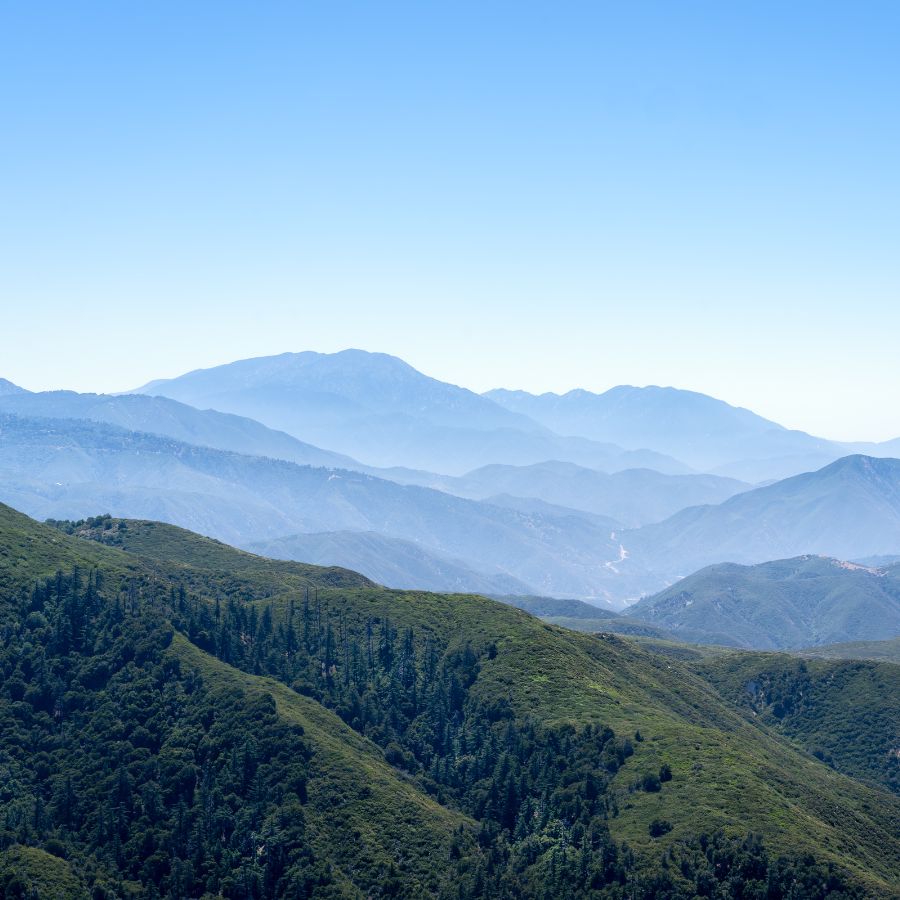
Julian is an exciting place to hunt for emeralds, with its rich history and geology making it a prime spot for gemstone lovers. The Julian mining district is especially well-known for its pegmatite deposits, which often hide treasures like emeralds.
If you’re exploring Julian, check out areas with exposed rocks and pegmatite veins. Keep an eye out for quartz and feldspar, as emeralds are often found near these minerals.
The best time to search is right after it rains, as the water can wash away dirt and uncover hidden gems. Bring tools like a rock hammer and a sifting screen to carefully search the loose soil and rocks for the green sparkle of an emerald.
If your kids constantly ask “What’s this rock?”, this guide finally gives you an answer you don’t have to Google later. Quick photos, simple descriptions, and rugged pages make ID’ing rocks fun instead of frustrating.
🔍 Fast visual matching—no geology background needed
💦 Wipe-clean pages made for creeks, beaches & dirt
📚 Simple explanations for beginners of all ages
🌄 Great for California hikes, creek beds & camping trips
Klamath Mountains
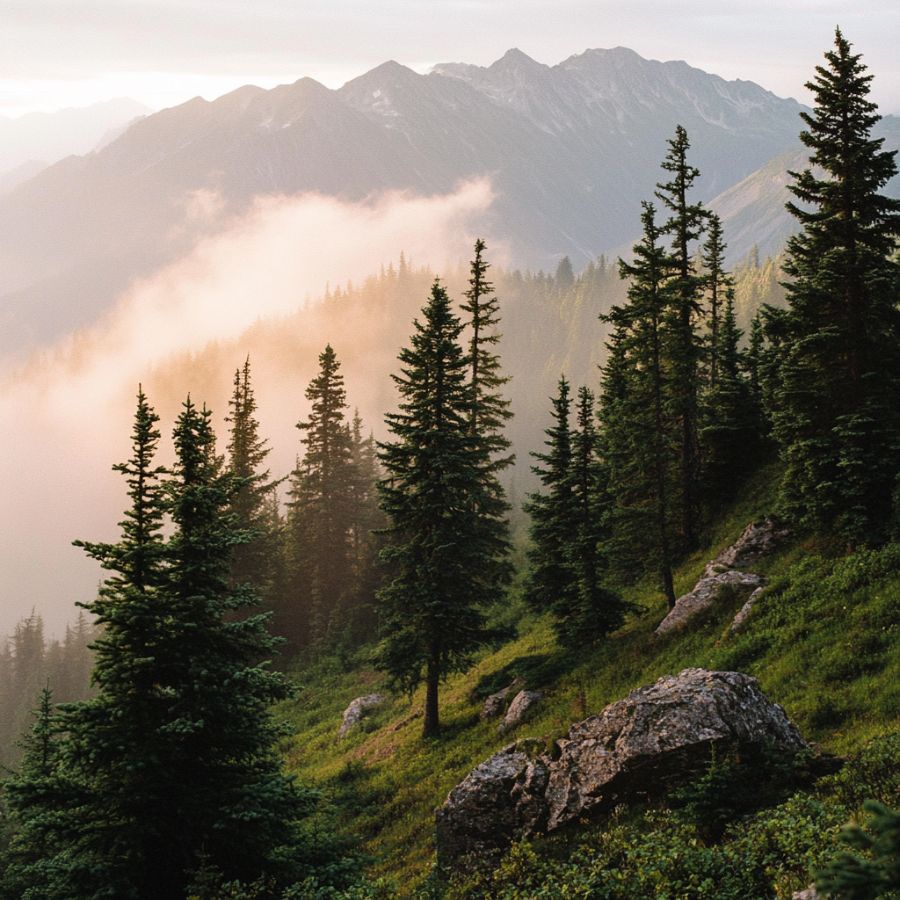
The Klamath Mountains are home to a mix of ancient metamorphic rocks, ultramafic rocks, and pegmatites, creating ideal conditions for emerald formation. This complex geology, shaped by tectonic activity over millions of years, provides a rich environment for uncovering gemstones.
Stream beds and eroded hillsides are some of the best places to search for emeralds in the Klamath Mountains. Green minerals like actinolite or epidote often appear nearby and can signal promising spots to investigate further.
Late spring and early summer are ideal times for searching, as melting snow and runoff can reveal hidden gems. Using a small pick and a sturdy bucket makes it easier to collect and inspect stones from gravel beds and loose rock piles.

